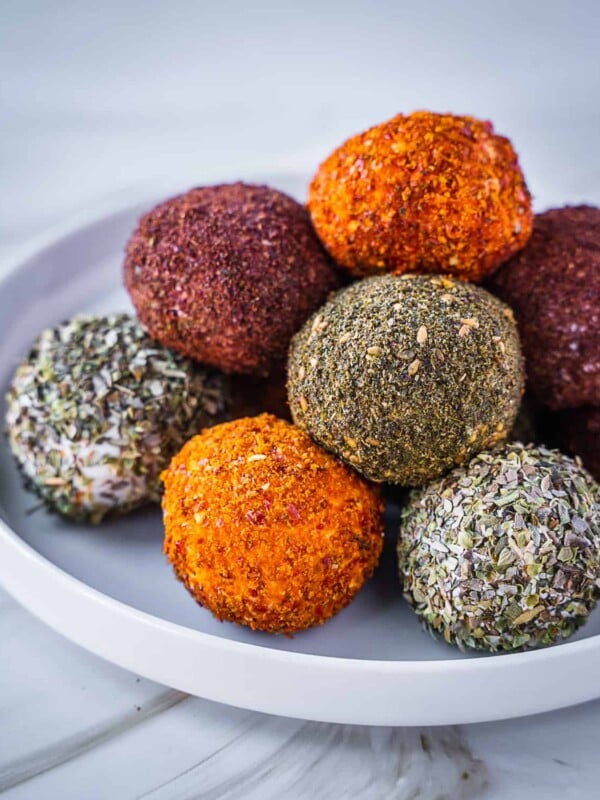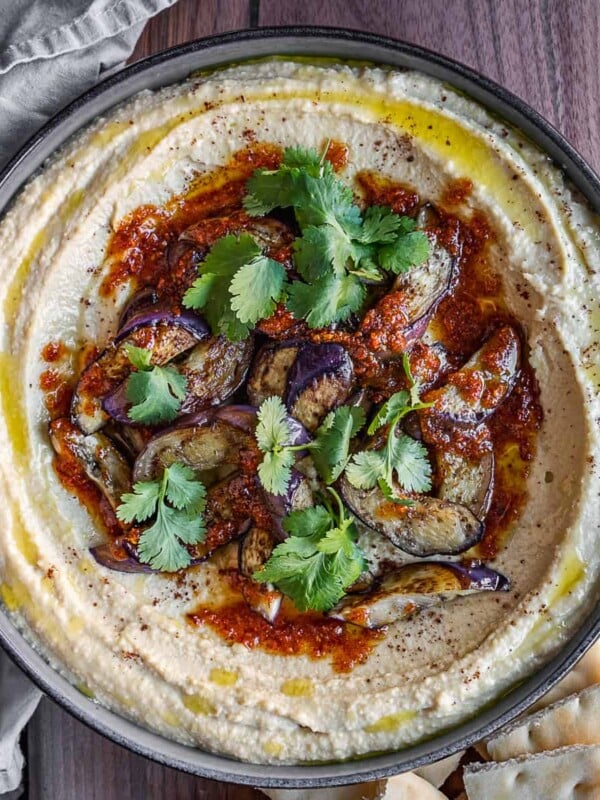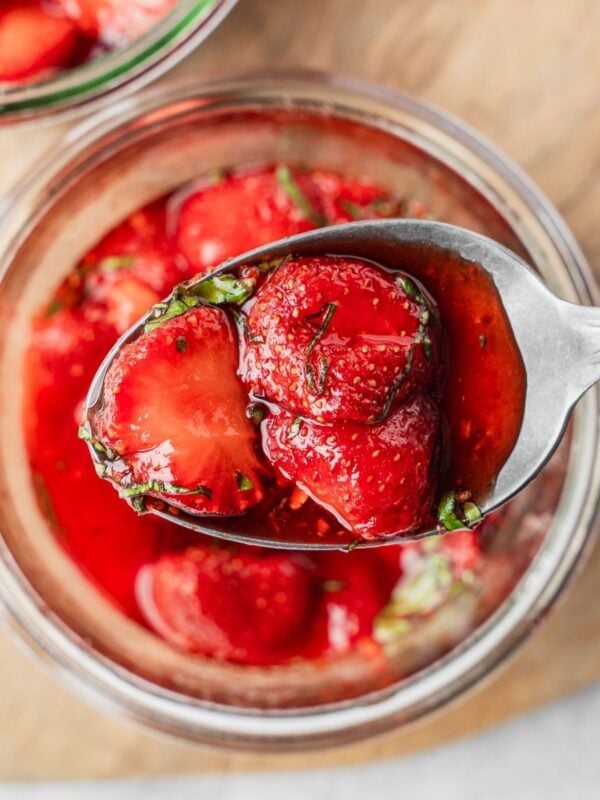Sumac is a versatile and flavorful spice with a long history of use in the Middle East. It is used to add flavor to a wide range of dishes and is one of the main ingredients in Za’atar spice blend. It is an essential pantry spice in all Middle-Eastern homes.

Table of Contents
Despite its many uses, sumac is not a well-known spice outside of the Middle East. However, it is starting to gain popularity in other parts of the world as people discover its unique flavor.
This post will cover everything you need to know about it, including its history and plant information, uses, substitutions, recipes, and more.
Plant information and history
Sumac (Rhus) is a perennial flowering plant in the Anacardiaceae family, which also includes cashews, mangoes, and poison ivy among many others. It is native to the Middle East and is widely cultivated in Mediterranean and Middle Eastern countries.
Sumac, also spelled sumach or summaq (سماق – meaning dark red in Arabic) grows best in warm, dry climates, and is commonly found in countries such as Turkey, Syria, and Iran. It can grow up to 20 feet tall and has a spreading, shrubby appearance. It also grows in North America and is usually found growing wild on the sides of highways, in parks and in ravines.

Sumac plants have a distinctive appearance, with compound leaves and small, red berries. Sumac is often used as a substitute for lemon juice in recipes, as it adds a similar tangy flavor without the liquid content.
To process sumac for use as a culinary spice, the berries are harvested from the plant and then dried in the sun. I have memories of my grandmother harvesting wild sumach berries near our family home growing up. She would wash and dry the berries really well before grinding them into spice using a traditional mill or food processor. Larger commercial operations use modern grinding equipment that stays cool to avoid exposing the dried berries to excess heat.
The ground sumac is then packaged and sold as a spice in jars, containers or bags. In the souks (markets) of the Middle East and North Africa, you will find mountains of sumac alongside other spices like cumin, cardamom, coriander and 7-spice.
How to use Sumac
Sumac has a long history of use in the Middle East, where it has been a staple ingredient in the cuisine and medicine of the region for centuries. In the Levant, sumac is commonly used in dishes such as kebabs, salads, and dips like Caramelized Eggplant Hummus and Mutabal. It is also used to flavor rice and other grains, and is often mixed with other spices to create the popular spice blend known as za’atar. It can be used to coat Labneh Balls.

The spice can be enjoyed in fresh or cooked applications. Unlike other spices and herbs that need to be cooked to bring out their flavor, sumac adds a punchy and citrusy kick regardless of how it’s used in a recipe. It works well with meat, fish and can also be sprinkled on grilled vegetables.
This deeply flavorful spice is used in classic salads like Authentic Fattoush, appetizers like spinach fatayer (hand pies) and main dishes like Musakhan and za’atar chicken. I also like adding to Arayes (meat stuffed pita). It’s also one of the main ingredients in sumac onions.
Recipes that feature Sumac
Check out these recipes to get inspired.
Recipes
Levantine Recipes
Main Dishes
Levantine Recipes
Other uses
Sumac has also been used for its medicinal properties. It has been traditionally used to treat a variety of ailments such as digestive problems, infections, and skin conditions. Some studies have also shown that sumac may have anti-inflammatory and antioxidant effects.
It is also used as a dye and tanning agent in the production of leather goods.
Nutritional information
Nutritionally, sumac is a good source of several important nutrients. It is a source of vitamins C and E. It is also a good source of minerals such as iron and potassium, which are essential for proper bodily function.
Where to buy
If you’re looking to try sumac for the first time, it is widely available in Middle Eastern grocery stores, specialty spice shops or online. It can be found in both ground and whole berry form. As it gains popularity, you’ll also find it in international markets and higher-end grocers like Whole Foods. Buy sumac online (affiliate link) if you can’t find it locally.

How to Store
Sumac should be stored in an airtight container in a dark and cool pantry. Keep it away from excess heat or cold. It doesn’t need to be refrigerated or frozen. I prefer to keep mine for no longer than 6 months. If you don’t use it often, purchase smaller jars or containers.
Poison Sumac
Poison sumac (Toxicodendron vernix) is a deciduous woody shrub or small tree with red stems, green/white oddly shaped berries and compounded foliage (which differs from that of the standard edible sumac). It is usually found in swamps and other wet areas as well as pinewoods and hardwood forests. It produces the allergen urushiol and can cause severe allergic reactions in some people.
The good news is that unless you’re foraging for sumac, you don’t have to worry about mistaking the two plants. If you are planning to forage for sumac, I encourage you to consult a foraging guidebook.
For more Urban Farm and Kitchen, follow along on Instagram, Facebook, and Pinterest, visit the Urban Farm Shop, or subscribe for new posts via email.















